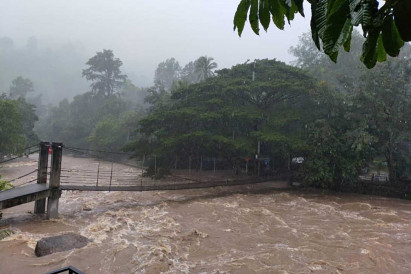
Children in the northeastern and southern regions of Thailand face the highest risk of climate change, according to a study released yesterday by the United Nations Children’s Fund (Unicef).
The study titled “Impact Assessment of Climate Change and Environmental Degradation on Children in Thailand” is the first of its kind in Thailand, examining the impact of climate change specifically on children across provinces, incomes, disabilities, and ages, said Kyungsun Kim, Unicef Representative for Thailand.
The study, published last October, found that the primary climate hazards affecting children are floods, droughts and high temperatures, which can cause water contamination, the spread of diseases and food insecurity.
“These climate and environmental hazards increase children’s vulnerability to diseases and disrupt their access to education, essential services and food supplies. This can lead to illnesses, malnutrition, stress, anxiety and even death, and creates lifelong damage to children’s development and well-being. In other words, it robs them of their future. And yet, this crucial child rights issue is not getting the attention or the action it deserves,” she said.
The study found that those living in rural areas are likely to face higher risks of climate change.
The top ten provinces at high risk of climate change impacts between 2016 and 2035 are Ubon Ratchathani, Nakhon Ratchasima, Si Sa Ket, Nakhon Si Thammarat, Narathiwat, Surin, Songkhla, Buri Ram, Khon Kaen, and Surat Thani, respectively.

